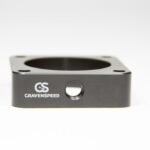Ever gazed at vintage plumbing or peered into the shadowy recesses of an older home and wondered about the fuzzy, seemingly benign material clinging to pipes or lurking between walls? Could it be the notorious asbestos insulation, silently posing a hazard? Identifying asbestos insulation requires a keen eye and a fundamental understanding of its various forms and applications. It’s a bit like playing detective, where misidentification could lead to complacency in the face of a genuine health risk.
A Visual Inventory of Asbestos Insulation: Recognizing the Culprits
Asbestos insulation didn’t arrive on the scene looking like a singular, easily identifiable substance. Its versatility led to its incorporation into a myriad of products, each with a distinct appearance. Let’s delve into the common guises of this once-ubiquitous material:
- Pipe Insulation (Lagging): Perhaps the most recognizable form, asbestos pipe lagging typically manifests as a molded, pre-formed covering encasing pipes, especially in heating systems. It often presents as a whitish-gray, cementitious material that may crumble or flake upon disturbance. Sections might be wrapped in canvas or paper, secured with tape or metal bands. Older installations may appear weathered and discolored, further complicating identification.
- Vermiculite Insulation: This loose-fill insulation, commonly found in attics and walls, is comprised of small, pebble-like granules. While vermiculite itself is a naturally occurring mineral, a significant portion of vermiculite insulation sold in the past originated from a mine in Libby, Montana, which was heavily contaminated with tremolite asbestos. This renders much of the older vermiculite insulation potentially hazardous. Appearance-wise, it ranges in color from silver-gold to brownish-gray.
- Spray-Applied Insulation (Flocking): This type of insulation was commonly used for fireproofing steel beams and ceilings, as well as for soundproofing. It boasts a fluffy, textured surface and often exhibits a grayish or whitish hue. Disturbance, even slight, can easily release asbestos fibers into the air.
- Block Insulation: Typically utilized in industrial settings, block insulation appears as rigid, rectangular blocks fastened around boilers, ducts, and other high-temperature equipment. Its composition is generally a mixture of asbestos fibers and a binding agent, rendering it durable yet potentially friable over time.
- Cementitious Boards: Asbestos cement boards were favored for their fire-resistant properties and were frequently employed in wall and ceiling construction. They are dense, rigid, and grayish-white in color. Whilst generally less prone to fiber release when intact, cutting, drilling, or otherwise damaging these boards can liberate asbestos fibers.
The Devil’s in the Details: Discerning Asbestos from Innocuous Materials
Visual identification alone is fraught with peril. Many innocuous materials bear a striking resemblance to asbestos-containing products. Cellulose insulation, for instance, can mimic the appearance of vermiculite. Similarly, mineral wool insulation can resemble spray-applied asbestos. Therefore, relying solely on visual cues is insufficient for definitive identification.
Consider these points to enhance your observational acuity:
- Age of the Building: Buildings constructed before the 1980s are more likely to contain asbestos-containing materials. Asbestos use peaked in the mid-20th century and gradually declined as regulations tightened.
- Location of the Material: Asbestos insulation was commonly employed in specific areas, such as around heating systems, pipes, and in attics and walls. Concentrating your search in these locales increases the likelihood of encountering it.
- Texture and Consistency: Asbestos insulation, particularly older installations, may exhibit a brittle, crumbling texture. Disturbing the material might release dust or fibers. Handle with extreme caution.
- Manufacturer Markings: Some asbestos-containing products bear manufacturer markings or stamps. These markings can provide clues to the material’s composition and potential hazards.
The Cardinal Rule: When in Doubt, Abstain and Ascertain
The most crucial dictum regarding potential asbestos exposure is to avoid disturbing the material. Disturbing asbestos-containing materials releases microscopic fibers into the air, which can be inhaled, leading to severe respiratory ailments, including asbestosis, lung cancer, and mesothelioma. If you suspect the presence of asbestos, the best course of action is to leave it undisturbed and engage a certified asbestos abatement professional.
The Path to Certainty: Laboratory Analysis
The only definitive method for confirming the presence of asbestos is through laboratory analysis. A qualified professional will collect a sample of the suspected material, adhering to stringent safety protocols, and submit it to an accredited laboratory for testing. Polarized light microscopy (PLM) is a common analytical technique used to identify asbestos fibers based on their unique optical properties.
Navigating the Labyrinth: Engaging Professionals
Asbestos abatement is a highly regulated field, and any removal or remediation work should be entrusted to licensed and experienced professionals. These professionals possess the training, equipment, and expertise to safely handle asbestos-containing materials, minimizing the risk of fiber release and exposure. They will also ensure proper disposal of the asbestos-containing waste, complying with all applicable regulations.
In conclusion, while visual assessment can provide initial clues, definitive identification of asbestos insulation necessitates laboratory testing. Prioritize safety, avoid disturbance, and consult with qualified professionals to ensure a safe and healthy environment.









Leave a Comment